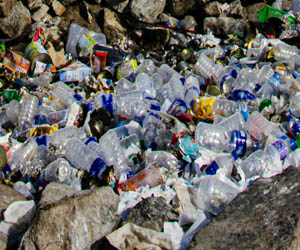


A Guide To Raising A Happy And Well-Behaved Pup

Bringing a new puppy into your life is a joyous and rewarding experience, but it also comes with great responsibility. Proper puppy care and training are essential to ensure your furry friend grows up to be a well-behaved, happy, and healthy dog. In this article, we will explore the fundamental essentials of puppy care and training.
Puppy Care Essentials
Healthcare: The first step in puppy care is ensuring their health. Regular veterinary check-ups, vaccinations, and preventive treatments for parasites are crucial. Consult your vet to establish a vaccination schedule and address any health concerns.
Nutrition: A balanced diet is vital for a growing puppy. Consult your veterinarian to choose the right puppy food and feeding schedule. Follow their guidance to prevent overfeeding or underfeeding, which can lead to health problems.
Exercise: Puppies are bundles of energy, and they need regular exercise to stay fit and healthy. Age-appropriate exercise, such as short walks, playtime, and interactive toys, is essential. Avoid excessive exercise to protect growing bones.
Grooming: Regular grooming is necessary to keep your puppy clean and comfortable. Brush your puppy's coat, trim their nails, and clean their ears to prevent matting, infections, and discomfort.
Socialization: Early socialization is crucial to ensure your puppy grows up to be a well-adjusted adult dog. Expose your pup to various people, pets, and environments to reduce fear and anxiety in new situations.
Puppy Training Essentials
Basic Obedience: Start with basic obedience training, teaching your puppy commands like "sit," "stay," "come," and "down." Consistency and positive reinforcement are key to effective training.
House Training: Housebreaking your puppy is a critical aspect of training. Establish a routine for bathroom breaks and use positive reinforcement to reward them for eliminating in the appropriate place.
Crate Training: Crate training helps with housebreaking and provides your puppy with a safe and secure space. Make the crate a positive place by associating it with treats and comfort.
Leash Training: Leash training is essential for safety during walks. Introduce your puppy to a leash gradually and use positive reinforcement to reward walking nicely on a leash.
Social Skills: Teach your puppy good social behavior with other dogs and people. Encourage positive interactions and correct unwanted behaviors to prevent aggression or fear.
Problem-Solving: Address behavioral issues promptly. If your puppy exhibits undesirable behaviors like chewing, jumping, or excessive barking, use positive reinforcement to guide them toward better behavior.
Patience: Remember that training takes time, and puppies will make mistakes. Be patient and avoid punitive measures, which can harm the bond between you and your puppy.
Puppy care and training are the cornerstones of raising a well-behaved and happy dog. By providing proper healthcare, nutrition, exercise, and socialization, you set the foundation for a healthy and well-adjusted pet. Consistent and positive reinforcement-based training is essential for teaching obedience, house manners, and social skills. Building a strong bond with your puppy through proper care and training ensures that they grow up to be a cherished and delightful member of your family.
 3. Playful And Energetic Cats: If you have a cat that is constantly on the move, chasing toys, and pouncing on imaginary prey, you have a playful and energetic companion. These cats are often young and curious, and they require plenty of mental and physical stimulation to stay happy.
3. Playful And Energetic Cats: If you have a cat that is constantly on the move, chasing toys, and pouncing on imaginary prey, you have a playful and energetic companion. These cats are often young and curious, and they require plenty of mental and physical stimulation to stay happy.
4. The Cool And Calm Cats: Some cats exude a sense of calm and tranquility. They are not easily perturbed by changes in their environment and may be more adaptable to new situations. These cats can provide a soothing presence in your home.
5. Vocal And Chatty Cats: If your cat is a talker, you have a chatty feline. Some cats are more vocal than others, expressing themselves through meows, purrs, and even chirps. Understanding their unique vocalizations can help you interpret their needs and moods.
6. Shy And Timid Cats: Shy and timid cats are often cautious in new situations and may take time to warm up to people or other animals. Patience and gentle encouragement are key to helping them build confidence.
7. Confident And Fearless Cats: Conversely, some cats are fearless and confident in any situation. They may be the first to investigate new visitors or explore unfamiliar spaces. These cats tend to have a strong sense of curiosity and adventure.
8. The Lap Cat: Lap cats are the epitome of affection. They love to snuggle on your lap or curl up next to you. These cats provide warmth and comfort, and their purring is a soothing melody of contentment.
9. Mischief Makers: Mischief makers are the cats that love to explore and get into everything. They may be prone to knocking things off shelves, unraveling toilet paper, and generally causing playful chaos. While their antics can be exasperating, they bring a dose of humor to your life.






A Sustainable Path To A Greener Future
 Unlocking The Power Of The Elements: Natural power, often harnessed through renewable energy technologies, draws upon the immense energy stores provided by the Earth's natural elements. These elements include sunlight, wind, and water, each offering unique opportunities for generating electricity and addressing our growing energy needs.
Unlocking The Power Of The Elements: Natural power, often harnessed through renewable energy technologies, draws upon the immense energy stores provided by the Earth's natural elements. These elements include sunlight, wind, and water, each offering unique opportunities for generating electricity and addressing our growing energy needs.
Solar Energy: Solar power is a frontrunner in harnessing natural power. Solar panels capture energy from the sun's rays, converting it into electricity through photovoltaic cells. This technology has become increasingly efficient and affordable, making it accessible to both residential and industrial consumers. Solar power not only reduces reliance on fossil fuels but also contributes to energy independence.
Wind Energy: Wind turbines are another means of harnessing natural power. These towering structures transform wind energy into electricity, delivering a steady stream of clean power. Wind energy's versatility allows for both onshore and offshore installations, harnessing the power of the wind to generate electricity and reduce greenhouse gas emissions.
Hydropower: Hydropower has been harnessed for centuries, but modern technology has improved its efficiency and environmental sustainability. Dams, turbines, and generators convert the kinetic energy of flowing water into electricity. Large-scale hydropower plants play a crucial role in providing clean energy while maintaining consistent power production.
Environmental Benefits: One of the key advantages of harnessing natural power is the reduced environmental impact. Unlike fossil fuels, these natural power sources produce no harmful emissions, minimizing air and water pollution.
A Closer Look At The Myths And Realities
 Mind Control: One of the most common myths perpetuated in pop culture is the idea of hypnosis as a tool for mind control. Characters are often depicted as helplessly falling under the spell of a hypnotist, who can make them do anything against their will. In reality, hypnosis does not grant this level of control over an individual. Hypnotized individuals remain aware and can choose whether or not to follow suggestions. Ethical hypnotists adhere to strict guidelines to ensure the well-being and autonomy of their clients.
Mind Control: One of the most common myths perpetuated in pop culture is the idea of hypnosis as a tool for mind control. Characters are often depicted as helplessly falling under the spell of a hypnotist, who can make them do anything against their will. In reality, hypnosis does not grant this level of control over an individual. Hypnotized individuals remain aware and can choose whether or not to follow suggestions. Ethical hypnotists adhere to strict guidelines to ensure the well-being and autonomy of their clients.
Zombie-Like Trance: Pop culture often portrays individuals in a hypnotic trance as being unresponsive and zombie-like, with vacant stares and robotic movements. In reality, individuals under hypnosis typically experience deep relaxation and heightened focus, but they remain aware of their surroundings and maintain their personalities.
Instant Solutions: Pop culture sometimes presents hypnosis as a quick and magical solution to complex problems. For example, characters may overcome deep-seated traumas or fears in a matter of minutes. In real-life therapeutic settings, hypnotherapy is a process that often requires multiple sessions to achieve meaningful and lasting results.
Realities Of Hypnosis:
Therapeutic Tool: While pop culture often exaggerates the mystical aspects of hypnosis, it's a valuable therapeutic tool used by trained professionals to address a wide range of issues. Hypnotherapy has been proven effective in smoking cessation, weight loss, stress reduction, phobia treatment, and more.
Techniques For Induction
 Dream Journaling: Keeping a dream journal is an essential tool for lucid dream induction. As soon as you wake up, jot down the details of your dreams. This practice helps you become more attuned to your dream world, notice recurring patterns, and identify dream signs that can lead to lucidity.
Dream Journaling: Keeping a dream journal is an essential tool for lucid dream induction. As soon as you wake up, jot down the details of your dreams. This practice helps you become more attuned to your dream world, notice recurring patterns, and identify dream signs that can lead to lucidity.
Mnemonic Induction Of Lucid Dreams (MILD): MILD is a technique developed by Dr. Stephen LaBerge, a pioneering researcher in lucid dreaming. Before falling asleep, repeat a mantra or affirmation, such as "I will be aware that I am dreaming," or "I will have a lucid dream." The key is to believe in your intention and maintain focus as you drift off to sleep.
Wake-Back-To-Bed (WBTB): The WBTB technique involves waking up during the night, staying awake for a brief period, and then going back to sleep with the intention of having a lucid dream. This strategy leverages the increased likelihood of entering a dream directly into a state of awareness after being awake.
Visualization: Visualization techniques involve imagining yourself in a lucid dream scenario before sleep. By vividly imagining the sensations and experiences of a lucid dream, you can prime your subconscious mind to create these experiences during the dream state.
A Sustainable Solution For A Greener World
 Diverse Feedstocks
Diverse Feedstocks
One of the notable aspects of fuel production from waste streams is the versatility of feedstock materials. Different types of waste can be used, making this approach a flexible solution for waste management and energy production. Biomass, plastics, and organic waste can all be converted into fuels, diverting them from landfills and incineration.
Biofuels: A Renewable Option
Biofuels are a significant product of this waste-to-fuel process. They are typically produced from biological materials, such as plant residues or algae. Ethanol and biodiesel are common biofuels that can be used to replace or blend with traditional gasoline and diesel, reducing the carbon footprint of transportation.
Synthetic Fuels: A Clean Alternative
In addition to biofuels, waste-to-fuel processes can also produce synthetic fuels. Synthetic fuels, such as synthetic gasoline or synthetic diesel, are made from waste materials through chemical processes. These fuels are compatible with existing internal combustion engines and can be used in a wide range of applications, including transportation and industrial processes.
Environmental And Economic Benefits
Fuel production from waste streams offers a range of environmental and economic advantages. It contributes to waste reduction and diversion, mitigating the environmental impact of landfills and reducing the release of greenhouse gases. This approach also reduces the demand for non-renewable fossil fuels, decreasing carbon emissions and reliance on depleting natural resources.
From an economic perspective, converting waste materials into fuels creates opportunities for job growth in waste collection, processing, and fuel production industries. It can stimulate local economies and promote sustainable practices, contributing to a more resilient and vibrant society.